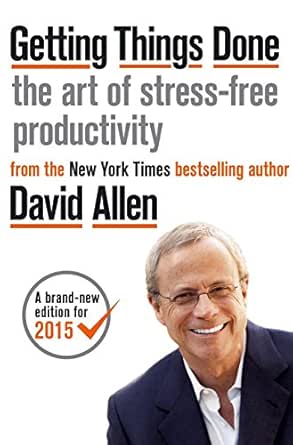In today’s fast-paced world, we need to capture information in a place where it won’t be forgotten and can be processed at a date and time of our choosing. It should be the initial home of any idea, thought, or task from your own mind. This is where the concept of having an inbox comes in.
What is an inbox?
Before we go any further, I think it is important for us to agree on how to define an inbox.
When someone mentions “inbox,” you are probably thinking about your email inbox, which is a good example. An inbox is a place where you capture things for later processing.
Any input into your productivity and knowledge management system should have an inbox that you routinely review. I try to review mine every day.
It acts as a store for any ideas, thoughts, and things to do, either created by yourself or others. By putting things into an inbox, you free up time and mental capabilities to focus on the tasks you are currently working on.
To maintain my focus while writing blog posts, I capture content ideas in my bullet journal, one of my designated inboxes. This quick note-taking method minimizes disruptions to my writing flow and frees up mental space for the task at hand.
But for me to be able to note something down for later action, I must have confidence that I will revisit that idea at some point in the future. This brings us neatly to the next section on managing your inbox.
Managing your inbox
To manage your inboxes, start by scheduling regular check-in times. I check all my inboxes daily during the week, usually in the early evening before I start working on my content.
As you work through the inbox, and with each item in turn, you should decide what you will do with it. You need to determine if you will.
- Take action (do a task)
- Assign it to someone else
- File it away as reference material
- Not needed, which you should remove or delete

If you need to take an action, you should add the action to your task list to ensure that it isn’t forgotten. If it would take less time to do, then adding the task to your list, you should do it. David Allen calls this the two-minute rule.
If you want to keep it for reference, place it where you can easily find it. For me, that means putting it into my knowledge management process. You can learn more about my processes in my Productivity and Knowledge Management System 2024.
Types of Inboxes
An inbox can be physical, like my bullet journal, or virtual, residing in a digital system.
The digital systems which host inboxes for my productivity and knowledge management systems include the following:
- text messages
- social media
- Obsidian
- Readwise Reader
David Allen recommends keeping the number of inboxes to a minimum while still ensuring you cover all inputs into your productivity and knowledge management system.
There is a conflict between this sensible recommendation and the reality of working with digital systems.
Conclusion
Maintaining an inbox provides a dedicated space for capturing thoughts, ideas, and tasks as they arise. This frees your mind to concentrate on the task at hand, knowing that everything will be addressed later.
My inbox is the heart of my productivity and knowledge management system, and I would encourage you to let it be the heart of yours.
If you enjoy our content, why don’t you subscribe to our weekly Newsletter? We will update you on the latest content we have published and what things currently intrigues us.
Further reading
Get Things Done by David Allen
My Knowledge and Productivity Knowledge Management System 2024
Introductory guide to fleeting notes

